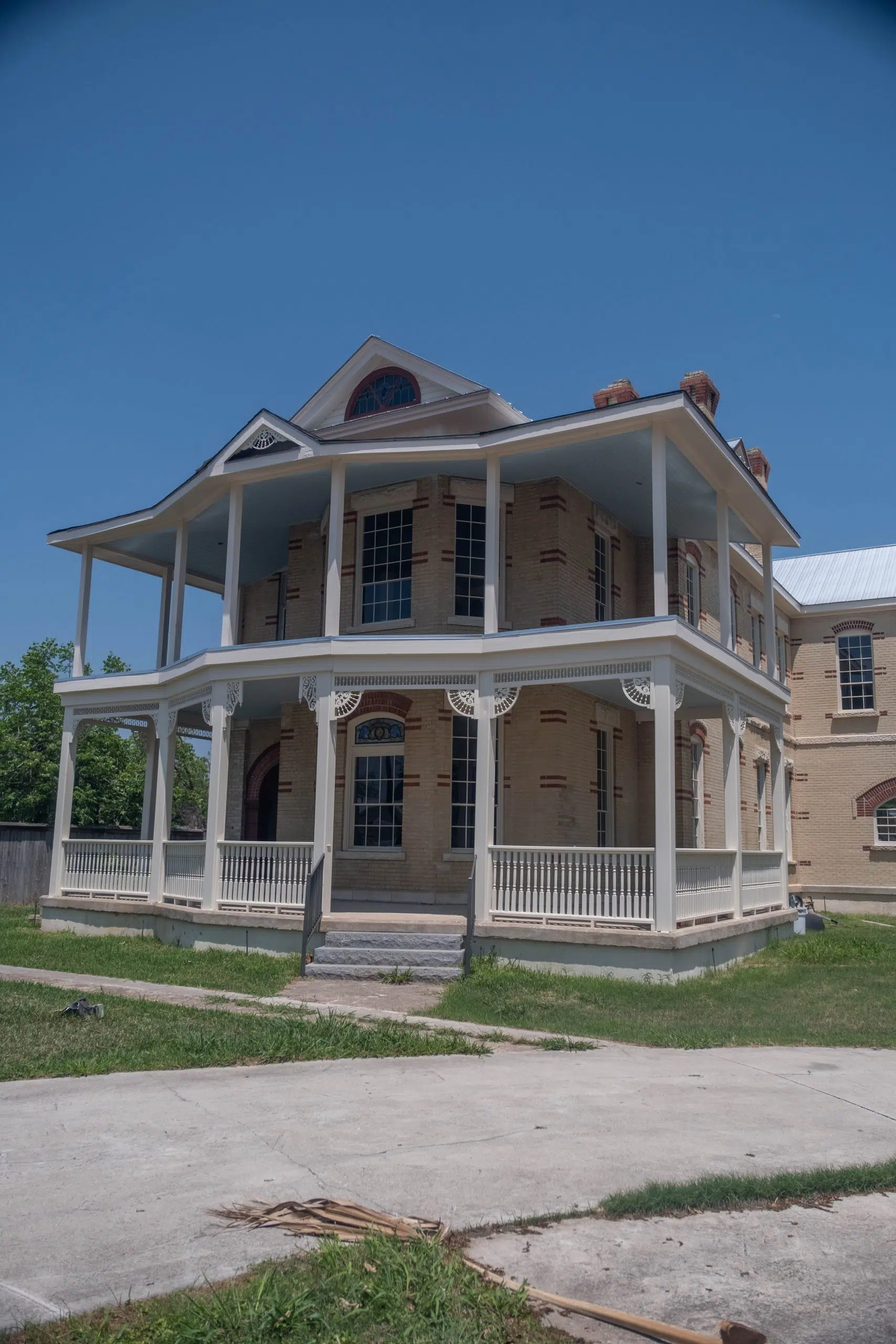In the second-half of the 20th century, America’s main streets suffered from the one-two punch of urban sprawl and aggressive growth by big box retailers. Commerce and culture were pushed out of downtowns like ours, leaving buildings and homes vacant and masked behind “modern” facades.
Decades later, everything old is new again. Many innovative, mid-sized cities (like Tucson) have recognized the economic and environmental benefits of reUrbanism and adaptive reuse. Now, the tenets of these concepts are taking root in Seguin alongside significant growth. Former residents and Seguin natives are returning with vision and a wealth of experience to create exciting, catalytic projects in and around downtown. Here are just two examples.
“The Backyard”
Last year’s downtowner of the Year Freddie Leos was a student at Texas Lutheran University in the mid-90s when he fell in love with Seguin’s historic houses and buildings. After developing projects elsewhere for several years, the architect and developer once again looked south of New Braunfels and purchased his first property in downtown seven years ago. Since then, he has been responsible for the restoration of many languishing structures – including the space now occupied by the much-lauded Burnt Bean BBQ, which is drawing visitors from across the state.
“Five years ago, investor friends of mine thought I was crazy to focus on Seguin. But what I saw were beautiful, architecturally-significant buildings and houses that were affordable. And it’s really satisfying to invest here because people support and enjoy what we do,” Leos says.
Most recently, he purchased the shuttered Lizzie M. Burges Elementary school from Seguin ISD, and immediately began plans to restore the mid-century design of the campus. “The Backyard” is a multi-use destination, incorporating retail, dining, and recreation. It’s a classic example of adaptive reuse: the 16 classrooms now function as retail spaces. Basketball courts, tetherball and other games provide recreation for kids while parents enjoy an adult beverage from the indoor and outdoor bars, and food from one of several dedicated food trucks.
“I love Central Park, but I’ve long wanted more places downtown where people could go to hang out. And I really want to see more opportunities for kids and families,” Leos says. The Backyard serves this purpose, and more. The 700-800 sq. ft. retail spaces rent for $1200 – $1500 a month, all utilities included, allowing small start-ups to incubate with a captive audience just outside enjoying food, beverages, music and recreation.
“We created a space not only for small businesses to thrive, but for the neighborhood to gather,” Leos says.
Hollamon House & the Mosheim Mansion
For Patty Garcia, her father’s legacy is her true north. After immigrating from Mexico, Dr. Juan Garcia became the first Latino to practice medicine in Seguin. He was known as a gifted physician, devoted family man and committed citizen who contributed his time and talents to the community for decades before his death in 2019. These are lessons Patty and her four sisters learned early, and that she carried with her as she developed environmentally sustainable projects internationally. Now, she’s came home to honor him and his memory through the restoration of unique, historic properties.
Unafraid of a challenge, Garcia’s first foray into reuse and redevelopment here at home is the purchase of the long-vacant Hollamon House at 902 North Austin Street, one of the oldest wooden structures in Texas. Damaged by fire in 2009, the house lists dangerously to one side, yet still stands proudly nearly 200 years after being moved in three pieces to Seguin after the Civil War. Garcia and her team had just begun the clean up and assessment when tragedy struck another historic structure just down Austin Street.
The 120-year-old Mosheim Mansion, which was expanded by builder John Adam in the 1990s and operated as a bed and breakfast prior to the pandemic, caught fire earlier this month. The property endured days of soaking rain. Local leaders worried the historic home would be lost to downtown Seguin forever. Then Garcia and her partner Greg Schnurr arrived.
Garcia and Schnurr have begun to peel away the plaster and decay wrought by the fire and rain, and are uncovering architectural treasures every day. They intend to bring the same innovative thinking that made the Mosheim the first home in Seguin with electricity and indoor plumbing to its future.
“We really must preserve our past, our history. It fills my heart to restore these properties. Even with all the challenges, all I see is hope and opportunity, and that’s what we all need right now,” Garcia says. “Whatever concepts we end up with, I look forward to sharing the space with the community.”
Older, Smaller, Better
As we enter 41 years of the Seguin Main Street program, I am reminded that innovators like Leos, Garcia and Schnurr are standing on the shoulders of many people who saw Seguin’s worth and promise over the years. As we draw closer to finalizing a downtown master plan, the critical first ingredient is something that all these people shared: vision.
Let’s hope the new plan is grounded in a new vision, one I hope will follow The National Trust for Historic Preservation’s approach of Older, Smaller, Better. Their research demonstrates that connecting old buildings to new ideas means lower costs and greater sustainability, and results in neighborhoods with more diversity of businesses, business owners and residents. The Trust teaches us that reinvigorating downtown and adjacent neighborhoods is not only good business, it makes for a good quality of life. Ultimately, that’s a project we all own. •





